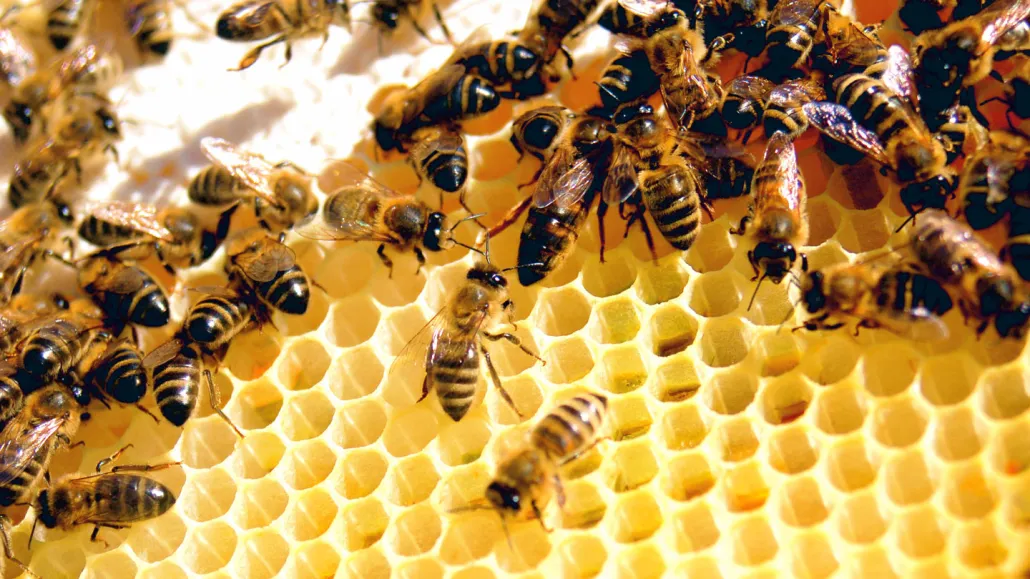
The nests of honeybees (one shown) consist of mostly hexagonal cells made from wax, but pairs of five-and seven-sided cells help fit together hexagons of different sizes.
Todd Huffman/Wikimedia Commons (CC BY 2.0)

The nests of honeybees (one shown) consist of mostly hexagonal cells made from wax, but pairs of five-and seven-sided cells help fit together hexagons of different sizes.
Todd Huffman/Wikimedia Commons (CC BY 2.0)